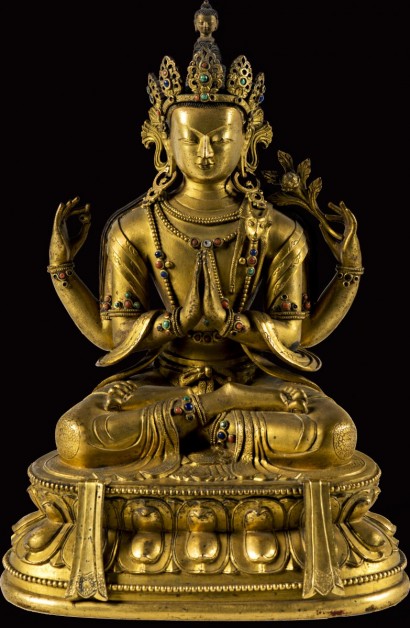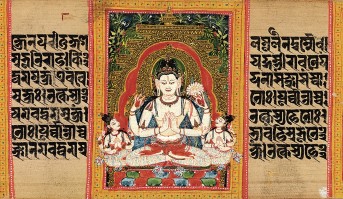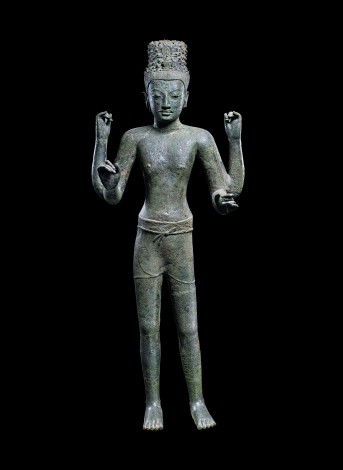China or Tibet, 18th–19th century; gilded metal with inlays; 10 1/4 x 7 1/4 in.; Jacques Marchais Museum of Tibetan Art, 85.04.0682.
This metal sculpture depicts a four-armed form of Avalokiteshvara. The elaborate treatment of the pedestal, crown, and jewelry suggests that this sculpture is the Tibetan Chenrezig manifesting as Shadakshari Lokeshvara. This form is associated with meditation and the mantra om mani padme hum, which is signified by the figure’s anjali mudra and yogic position aptly called padmasana. The bodhisattva wears an antelope skin over his left shoulder, which signifies his gentleness. Lotus imagery (signifying purity and enlightenment) emanates throughout, abstracted in the incised decorations on his garments, the form of his pedestal, and the blossom he holds in his raised left hand. CF






